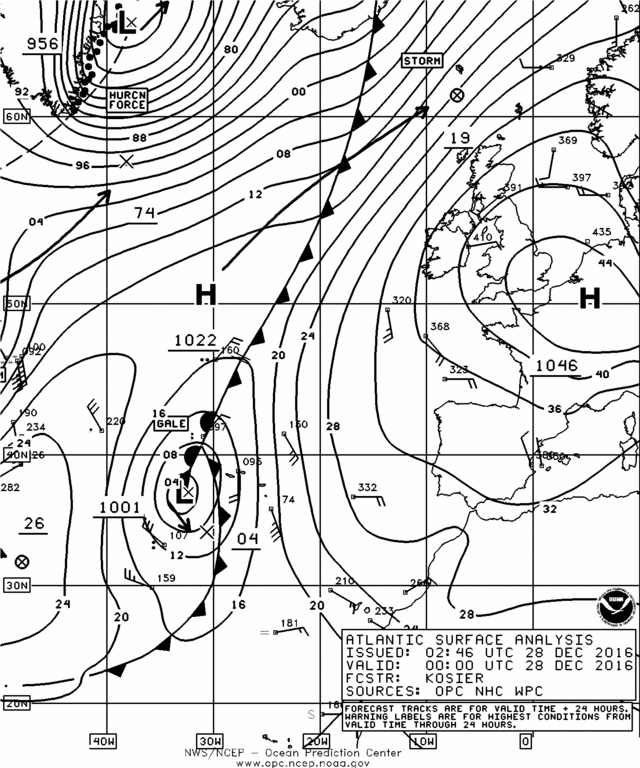Partial derivatives¶
Introduction¶
Functions can have a single variable or depend on many of them. The concept of derivative, the variation with respect a one of these variables must be adapted when functions can change along more than one direction.
For example, the velocity of a particle depends on a single variable, time,
however, the pressure on a map depends on two variables the longitude, \(\phi\), and its latitude, \(\theta\). Thus, we can think of the way the pressure changes with \(\theta\) and with \(\phi\),
Definition¶
The partial derivative is associated to the infinitesimal variation of a function with respect to one of the multiple variable it depends on. Its rigorous definition comes directly from the usual definition of derivative, keeping all non-changing variables constant. In order to denote the partial derivative we use the symbol \(\partial\) instead of the usual \(d\) that is reserved for the full derivative.
Example

Fig. 25 In a weather map we can observe that properties (pressure, precipitation density, etc.) depend on the position (2 dimensions).¶
In a weather map we could ask what the variation of the pressure along the north-south or the west-east axis is. These concepts are dealt with using partial derivatives.
Problems and solved examples¶
Find the partial derivatives of the function \(f(x,y,z)=6xy^2z^3+2xy\) with respect to the \(x\), \(y\) y \(z\) variables.
Empezamos trabajando sobre x
Seguimos trabajando sobre y
Terminamos trabajando sobre z
